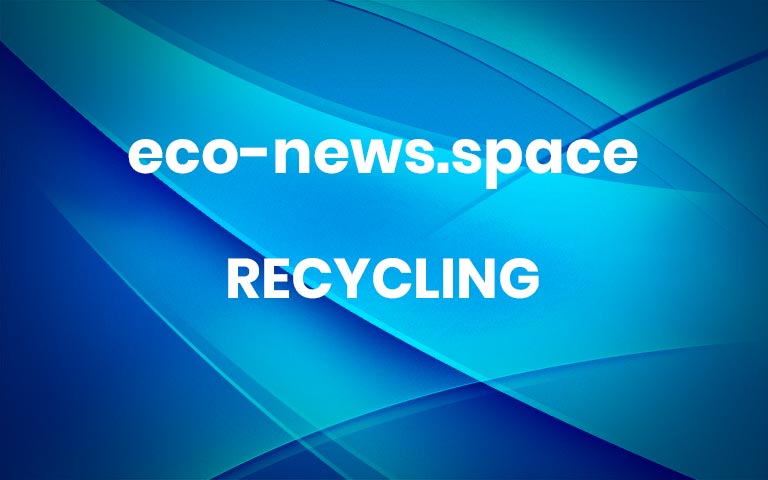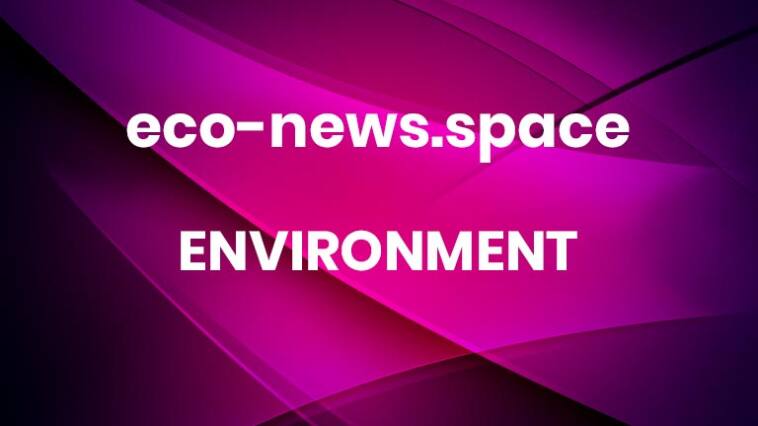HOTTEST

The accumulation of plastic waste in the oceans, soil, and even in our bodies is one of the major pollution issues of modern times, with over 5 billion tons disposed of so far. Despite major efforts to recycle plastic products, actually making use of that motley mix of materials has remained a challenging issue.
A key problem is that plastics come in so many different varieties, and chemical processes for breaking them down into a form that can be reused in some way tend to be very specific to each type of plastic. Sorting the hodgepodge of waste material, from soda bottles to detergent jugs to plastic toys, is impractical at large scale. Today, much of the plastic material gathered through recycling programs ends up in landfills anyway. Surely there’s a better way.
According to new research from MIT and elsewhere, it appears there may indeed be a much better way. A chemical process using a catalyst based on cobalt has been found to be very effective at breaking down a variety of plastics, such as polyethylene (PET) and polypropylene (PP), the two most widely produced forms of plastic, into a single product, propane. Propane can then be used as a fuel for stoves, heaters, and vehicles, or as a feedstock for the production of a wide variety of products — including new plastics, thus potentially providing at least a partial closed-loop recycling system.
The finding is described today in the open access journal JACS Au, in a paper by MIT professor of chemical engineering Yuriy Román-Leshkov, postdoc Guido Zichitella, and seven others at MIT, the SLAC National Accelerator Laboratory, and the National Renewable Energy Laboratory.
Recycling plastics has been a thorny problem, Román-Leshkov explains, because the long-chain molecules in plastics are held together by carbon bonds, which are “very stable and difficult to break apart.” Existing techniques for breaking these bonds tend to produce a random mix of different molecules, which would then require complex refining methods to separate out into usable specific compounds. “The problem is,” he says, “there’s no way to control where in the carbon chain you break the molecule.”
But to the surprise of the researchers, a catalyst made of a microporous material called a zeolite that contains cobalt nanoparticles can selectively break down various plastic polymer molecules and turn more than 80 percent of them into propane.
Although zeolites are riddled with tiny pores less than a nanometer wide (corresponding to the width of the polymer chains), a logical assumption had been that there would be little interaction at all between the zeolite and the polymers. Surprisingly, however, the opposite turned out to be the case: Not only do the polymer chains enter the pores, but the synergistic work between cobalt and the acid sites in the zeolite can break the chain at the same point. That cleavage site turned out to correspond to chopping off exactly one propane molecule without generating unwanted methane, leaving the rest of the longer hydrocarbons ready to undergo the process, again and again.
“Once you have this one compound, propane, you lessen the burden on downstream separations,” Román-Leshkov says. “That’s the essence of why we think this is quite important. We’re not only breaking the bonds, but we’re generating mainly a single product” that can be used for many different products and processes.
The materials needed for the process, zeolites and cobalt, “are both quite cheap” and widely available, he says, although today most cobalt comes from troubled areas in the Democratic Republic of Congo. Some new production is being developed in Canada, Cuba, and other places. The other material needed for the process is hydrogen, which today is mostly produced from fossil fuels but can easily be made other ways, including electrolysis of water using carbon-free electricity such as solar or wind power.
The researchers tested their system on a real example of mixed recycled plastic, producing promising results. But more testing will be needed on a greater variety of mixed waste streams to determine how much fouling takes place from various contaminants in the material — such as inks, glues, and labels attached to the plastic containers, or other nonplastic materials that get mixed in with the waste — and how that affects the long-term stability of the process.
Together with collaborators at NREL, the MIT team is also continuing to study the economics of the system, and analyzing how it can fit into today’s systems for handling plastic and mixed waste streams. “We don’t have all the answers yet,” Román-Leshkov says, but preliminary analysis looks promising.
The research team included Amani Ebrahim and Simone Bare at the SLAC National Accelerator Laboratory; Jie Zhu, Anna Brenner, Griffin Drake and Julie Rorrer at MIT; and Greg Beckham at the National Renewable Energy Laboratory. The work was supported by the U.S. Department of Energy (DoE), the Swiss National Science Foundation, and the DoE’s Office of Energy Efficiency and Renewable Energy, Advanced Manufacturing Office (AMO), and Bioenergy Technologies Office (BETO), as part of the the Bio-Optimized Technologies to keep Thermoplastics out of Landfills and the Environment (BOTTLE) Consortium. More

The long-term aspirational goal of the Paris Agreement on climate change is to cap global warming at 1.5 degrees Celsius above preindustrial levels, and thereby reduce the frequency and severity of floods, droughts, wildfires, and other extreme weather events. Achieving that goal will require a massive reduction in global carbon dioxide (CO2) emissions across all economic sectors. A major roadblock, however, could be the industrial sector, which accounts for roughly 25 percent of global energy- and process-related CO2 emissions — particularly within the iron and steel sector, industry’s largest emitter of CO2.Iron and steel production now relies heavily on fossil fuels (coal or natural gas) for heat, converting iron ore to iron, and making steel strong. Steelmaking could be decarbonized by a combination of several methods, including carbon capture technology, the use of low- or zero-carbon fuels, and increased use of recycled steel. Now a new study in the Journal of Cleaner Production systematically explores the viability of different iron-and-steel decarbonization strategies.Today’s strategy menu includes improving energy efficiency, switching fuels and technologies, using more scrap steel, and reducing demand. Using the MIT Economic Projection and Policy Analysis model, a multi-sector, multi-region model of the world economy, researchers at MIT, the University of Illinois at Urbana-Champaign, and ExxonMobil Technology and Engineering Co. evaluate the decarbonization potential of replacing coal-based production processes with electric arc furnaces (EAF), along with either scrap steel or “direct reduced iron” (DRI), which is fueled by natural gas with carbon capture and storage (NG CCS DRI-EAF) or by hydrogen (H2 DRI-EAF).Under a global climate mitigation scenario aligned with the 1.5 C climate goal, these advanced steelmaking technologies could result in deep decarbonization of the iron and steel sector by 2050, as long as technology costs are low enough to enable large-scale deployment. Higher costs would favor the replacement of coal with electricity and natural gas, greater use of scrap steel, and reduced demand, resulting in a more-than-50-percent reduction in emissions relative to current levels. Lower technology costs would enable massive deployment of NG CCS DRI-EAF or H2 DRI-EAF, reducing emissions by up to 75 percent.Even without adoption of these advanced technologies, the iron-and-steel sector could significantly reduce its CO2 emissions intensity (how much CO2 is released per unit of production) with existing steelmaking technologies, primarily by replacing coal with gas and electricity (especially if it is generated by renewable energy sources), using more scrap steel, and implementing energy efficiency measures.“The iron and steel industry needs to combine several strategies to substantially reduce its emissions by mid-century, including an increase in recycling, but investing in cost reductions in hydrogen pathways and carbon capture and sequestration will enable even deeper emissions mitigation in the sector,” says study supervising author Sergey Paltsev, deputy director of the MIT Center for Sustainability Science and Strategy (MIT CS3) and a senior research scientist at the MIT Energy Initiative (MITEI).This study was supported by MIT CS3 and ExxonMobil through its membership in MITEI. More

Lithium-ion batteries have had a poor recycling record for years, however a new report shows lithium-ion battery recycling is advancing much more than we think. Lithium-ion batteries have become crucial to our daily lives, powering electric cars, smartphones, laptops and other electronic devices and machinery. While the production of lithium-ion batteries is set to explode […] More

One glance at the news lately will reveal countless headlines on the dire state of global water and food security. Pollution, supply chain disruptions, and the war in Ukraine are all threatening water and food systems, compounding climate change impacts from heat waves, drought, floods, and wildfires.
Every year, MIT’s Abdul Latif Jameel Water and Food Systems Lab (J-WAFS) offers fellowships to outstanding MIT graduate students who are working on innovative ways to secure water and food supplies in light of these urgent worldwide threats. J-WAFS announced this year’s fellowship recipients last April. Aditya Ghodgaonkar and Devashish Gokhale were awarded Rasikbhai L. Meswani Fellowships for Water Solutions, which are made possible by a generous gift from Elina and Nikhil Meswani and family. James Zhang, Katharina Fransen, and Linzixuan (Rhoda) Zhang were awarded J-WAFS Fellowships for Water and Food Solutions. The J-WAFS Fellowship for Water and Food Solutions is funded in part by J-WAFS Research Affiliate companies: Xylem, Inc., a water technology company, and GoAigua, a company leading the digital transformation of the water industry.
The five fellows were each awarded a stipend and full tuition for one semester. They also benefit from mentorship, networking connections, and opportunities to showcase their research.
“This year’s cohort of J-WAFS fellows show an indefatigable drive to explore, create, and push back boundaries,” says John H. Lienhard, director of J-WAFS. “Their passion and determination to create positive change for humanity are evident in these unique video portraits, which describe their solutions-oriented research in water and food,” Lienhard adds.
J-WAFS funder Community Jameel recently commissioned video portraitures of each student that highlight their work and their inspiration to solve challenges in water and food. More about each J-WAFS fellow and their research follows.
Play video
Katharina Fransen
In Professor Bradley Olsen’s lab in the Department of Chemical Engineering, Katharina Fransen works to develop biologically-based, biodegradable plastics which can be used for food packing that won’t pollute the environment. Fransen, a third-year PhD student, is motivated by the challenge of protecting the most vulnerable global communities from waste generated by the materials that are essential to connecting them to the global food supply. “We can’t ensure that all of our plastic waste gets recycled or reused, and so we want to make sure that if it does escape into the environment it can degrade, and that’s kind of where a lot of my research really comes in,” says Fransen. Most of her work involves creating polymers, or “really long chains of chemicals,” kind of like the paper rings a lot of us looped into chains as kids, Fransen explains. The polymers are optimized for food packaging applications to keep food fresher for longer, preventing food waste. Fransen says she finds the work “really interesting from the scientific perspective as well as from the idea that [she’s] going to make the world a little better with these new materials.” She adds, “I think it is both really fulfilling and really exciting and engaging.”
Play video
Aditya Ghodgaonkar
“When I went to Kenya this past spring break, I had an opportunity to meet a lot of farmers and talk to them about what kind of maintenance issues they face,” says Aditya Ghodgaonkar, PhD candidate in the Department of Mechanical Engineering. Ghodgaonkar works with Associate Professor Amos Winter in the Global Engineering and Research (GEAR) Lab, where he designs hydraulic components for drip irrigation systems to make them water-efficient, off-grid, inexpensive, and low-maintenance. On his trip to Kenya, Ghodgaonkar gained firsthand knowledge from farmers about a common problem they encounter: clogging of drip irrigation emitters. He learned that clogging can be an expensive technical challenge to diagnose, mitigate, and resolve. He decided to focus his attention on designing emitters that are resistant to clogging, testing with sand and passive hydrodynamic filtration back in the lab at MIT. “I got into this from an academic standpoint,” says Ghodgaonkar. “It is only once I started working on the emitters, spoke with industrial partners that make these emitters, spoke with farmers, that I really truly appreciated the impact of what we’re doing.”
Play video
Devashish Gokhale
Devashish Gokhale is a PhD student advised by Professor Patrick Doyle in the Department of Chemical Engineering. Gokhale’s commitment to global water security stems from his childhood in Pune, India, where both flooding and drought can occur depending on the time of year. “I’ve had these experiences where there’s been too much water and also too little water” he recalls. At MIT, Gokhale is developing cost-effective, sustainable, and reusable materials for water treatment with a focus on the elimination of emerging contaminants and low-concentration pollutants like heavy metals. Specifically, he works on making and optimizing polymeric hydrogel microparticles that can absorb micropollutants. “I know how important it is to do something which is not just scientifically interesting, but something which is impactful in a real way,” says Gokhale. Before starting a research project he asks himself, “are people going to be able to afford this? Is it really going to reach the people who need it the most?” Adding these constraints in the beginning of the research process sometimes makes the problem more difficult to solve, but Gokhale notes that in the end, the solution is much more promising.
Play video
James Zhang
“We don’t really think much about it, it’s transparent, odorless, we just turn on our sink in many parts of the world and it just flows through,” says James Zhang when talking about water. Yet he notes that “many other parts of the world face water scarcity and this will only get worse due to global climate change.” A PhD student in the Department of Mechanical Engineering, Zhang works in the Nano Engineering Laboratory with Professor Gang Chen. Zhang is working on a technology that uses light-induced evaporation to clean water. He is currently investigating the fundamental properties of how light at different wavelengths interacts with liquids at the surface, particularly with brackish water surfaces. With strong theoretical and experimental components, his research could lead to innovations in desalinating water at high energy efficiencies. Zhang hopes that the technology can one day “produce lots of clean water for communities around the world that currently don’t have access to fresh water,” and create a new appreciation for this common liquid that many of us might not think about on a day-to-day basis.
Play video
Linzixuan (Rhoda) Zhang
“Around the world there are about 2 billion people currently suffering from micronutrient deficiency because they do not have access to very healthy, very fresh food,” says chemical engineering PhD candidate Linzixuan (Rhoda) Zhang. This fact led Zhang to develop a micronutrient delivery platform that fortifies foods with essential vitamins and nutrients. With her advisors, Professor Robert Langer and Research Scientist Ana Jaklenec, Zhang brings biomedical engineering approaches to global health issues. Zhang says that “one of the most serious problems is vitamin A deficiency, because vitamin A is not very stable.” She goes on to explain that although vitamin A is present in different vegetables, when the vegetables are cooked, vitamin A can easily degrade. Zhang helped develop a group of biodegradable polymers that can stabilize micronutrients under cooking and storage conditions. With this technology, vitamin A, for example, could be encapsulated and effectively stabilized under boiling water. The platform has also shown efficient release in a simulation of the stomach environment. Zhang says it is the “little, tiny steps every day that are pushing us forward to the final impactful product.” More

In 2019, MIT’s Environment, Health, and Safety (EHS) Office collaborated with several research labs in the Department of Biology to determine the feasibility of recycling clean lab plastics. Based on early successes with waste isolation and plastics collection, EHS collaborated with GreenLabs Recycling, a local startup, to remove and recycle lab plastics from campus. It was a huge success.
Today, EHS spearheads the campus Lab Plastics Recycling Program, and its EHS technicians regularly gather clean lab plastics from 212 MIT labs, transferring them to GreenLabs for recycling. Since its pilot stage, the number of labs participating in the program has grown, increasing the total amount of plastic gathered and recycled. In 2020, EHS collected 170 pounds of plastic waste per week from participating labs. That increased to 250 pounds per week in 2021. In 2022, EHS collected a total of 19,000 pounds, or 280 pounds of plastic per week.
Joanna Buchthal, a research assistant with the MIT Media Lab, indicates that, prior to joining the EHS Lab Plastics Recycling Program, “our laboratory was continuously troubled by the substantial volume of plastic waste we produced and disheartened by our inability to recycle it. We frequently addressed this issue during our group meetings and explored various ways to repurpose our waste, yet we never arrived at a viable solution.”
The EHS program now provides a solution to labs facing similar challenges with plastics use. After pickup and removal, the plastics are shredded and sold as free stock for injection mold product manufacturing. Buchthal says, “My entire lab is delighted to recycle our used tip boxes and transform them into useful items for other labs!”
Recently, GreenLabs presented EHS with a three-gallon bucket that local manufacturers produced from 100 percent recycled plastic gathered from MIT labs. No fillers or additives were used in its production.
Keeping it clean
The now-growing EHS service and operation started as a pilot. In June 2019, MIT restricted which lab-generated items could be placed in single-stream recycling. MIT’s waste vendors were no longer accepting possibly contaminated waste, such as gloves, pipette tip boxes, bottles, and other plastic waste typically generated in biological research labs. The waste vendors would audit MIT’s single-stream recycling and reject items if they observed any contamination.
Facing these challenges, the EHS coordinator for biology, John Fucillo, and several EHS representatives from the department met with EHS staff to brainstorm potential recycling solutions. Ensuring the decontamination of the plastic and coordinating its removal in an efficient way were the primary challenges for the labs, says Fucillo, who shared his and lab members’ concerns about the amount of plastic being thrown away with Mitch Galanek, EHS associate director for the Radiation Protection Program. Galanek says, “I immediately recognized the frustration expressed by John and other lab contacts as an opportunity to collaborate.”
In July 2019, Galanek and a team of EHS technicians began segregating and collecting clean plastic waste from several labs within the biology department. EHS provided the labs with collection containers, and its technicians managed the waste removal over a four-month period, which produced a snapshot of the volume and type of waste generated. An audit of the waste determined that approximately 80 percent of the clean plastic waste generated was empty pipette tip boxes and conical tube racks.
Based on these data, EHS launched a lab plastics recycling pilot program in November 2019. Labs from the Department of Biology and the Koch Institute for Integrative Cancer Research were invited to participate by recycling their clean, uncontaminated pipette tip boxes and conical tube racks. In addition to providing these labs with collection boxes and plastic liners, EHS also developed an online waste collection request tool to submit plastic pickup requests. EHS also collected the waste containers once they were full.
Assistant professor of biology Seychelle Vos joined the pilot program as soon as she started her lab in fall 2019. Vos shares that “we already use pipette tips boxes that produce minimal waste, and this program allows us to basically recycle any part of the box except for tips. Pipette boxes are a significant source of plastic waste. This program helps us to be more environmentally and climate friendly.”
Given the increased participation in the program, EHS technician Dave Pavone says that plastic pickup is now a “regular component of our work schedules.”
Together, the EHS technicians, commonly known as “techs,” manage the pickup of nearly 300 plastic collection containers across campus. Normand Desrochers, one of the EHS techs, shares that each morning he plans his pickup route “to get the job done efficiently.” While weekly pickups are a growing part of their schedules, Desrochers notes that everyone has been “super appreciative in what we do for their labs. And what we do makes their job that much easier, being able to focus on their research.”
Barbara Karampalas, a lab operations manager within the Department of Biological Engineering, is one of many to express appreciation for the program: “We have a fairly large lab with 35 researchers, so we generate a lot of plastic waste … [and] knowing how many tip boxes we were using concerned me. I really appreciate the effort EHS has made to implement this program to help us reduce our impact on the environment.” The program also “makes people in the lab more aware of the issue of plastic waste and MIT’s commitment to reduce its impact on the environment,” says Karampalas.
Looking ahead
MIT labs continue to enthusiastically embrace the EHS Lab Plastics Recycling Program: 112 faculty across 212 labs are currently participating in the program. While only empty pipette tip boxes and conical tube racks are currently collected, EHS is exploring which lab plastics could be manufactured into products for use in the labs and repeatedly recycled. Specifically, the EHS Office is considering whether recycled plastic could be used to produce secondary containers for collecting hazardous waste and benchtop transfer containers used for collecting medical waste. As Seychelle notes, “Most plastics cannot be recycled in the current schemes due to their use in laboratory science.”
Says Fucillo, “Our hope is that this program can be expanded to include other products which could be recycled from the wet labs.” John MacFarlane, research engineer and EHS coordinator for civil and environmental engineering, echoes this sentiment: “With plastic recycling facing economic constraints, this effort by the Institute deserves to be promoted and, hopefully, expanded.”
“Having more opportunities to recycle ’biologically clean’ plastics would help us have a smaller carbon footprint,” agrees Vos. “We love this program and hope it expands further!”
MIT labs interested in participating in the EHS Lab Plastics Recycling Program can contact [email protected] to learn more. More






